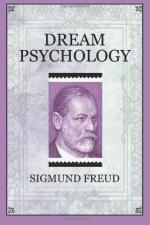IX
THE UNCONSCIOUS AND CONSCIOUSNESS—REALITY
On closer inspection we find that it is not the existence of two systems near the motor end of the apparatus but of two kinds of processes or modes of emotional discharge, the assumption of which was explained in the psychological discussions of the previous chapter. This can make no difference for us, for we must always be ready to drop our auxiliary ideas whenever we deem ourselves in position to replace them by something else approaching more closely to the unknown reality. Let us now try to correct some views which might be erroneously formed as long as we regarded the two systems in the crudest and most obvious sense as two localities within the psychic apparatus, views which have left their traces in the terms “repression” and “penetration.” Thus, when we say that an unconscious idea strives for transference into the foreconscious in order later to penetrate consciousness, we do not mean that a second idea is to be formed situated in a new locality like an interlineation near which the original continues to remain; also, when we speak of penetration into consciousness, we wish carefully to avoid any idea of change of locality. When we say that a foreconscious idea is repressed and subsequently taken up by the unconscious, we might be tempted by these figures, borrowed from the idea of a struggle over a territory, to assume that an arrangement is really broken up in one psychic locality and replaced by a new one in the other locality. For these comparisons we substitute what would seem to correspond better with the real state of affairs by saying that an energy occupation is displaced to or withdrawn from a certain arrangement so that the psychic formation falls under the domination of a system or is withdrawn from the same. Here again we replace a topical mode of presentation by a dynamic; it is not the psychic formation that appears to us as the moving factor but the innervation of the same.




